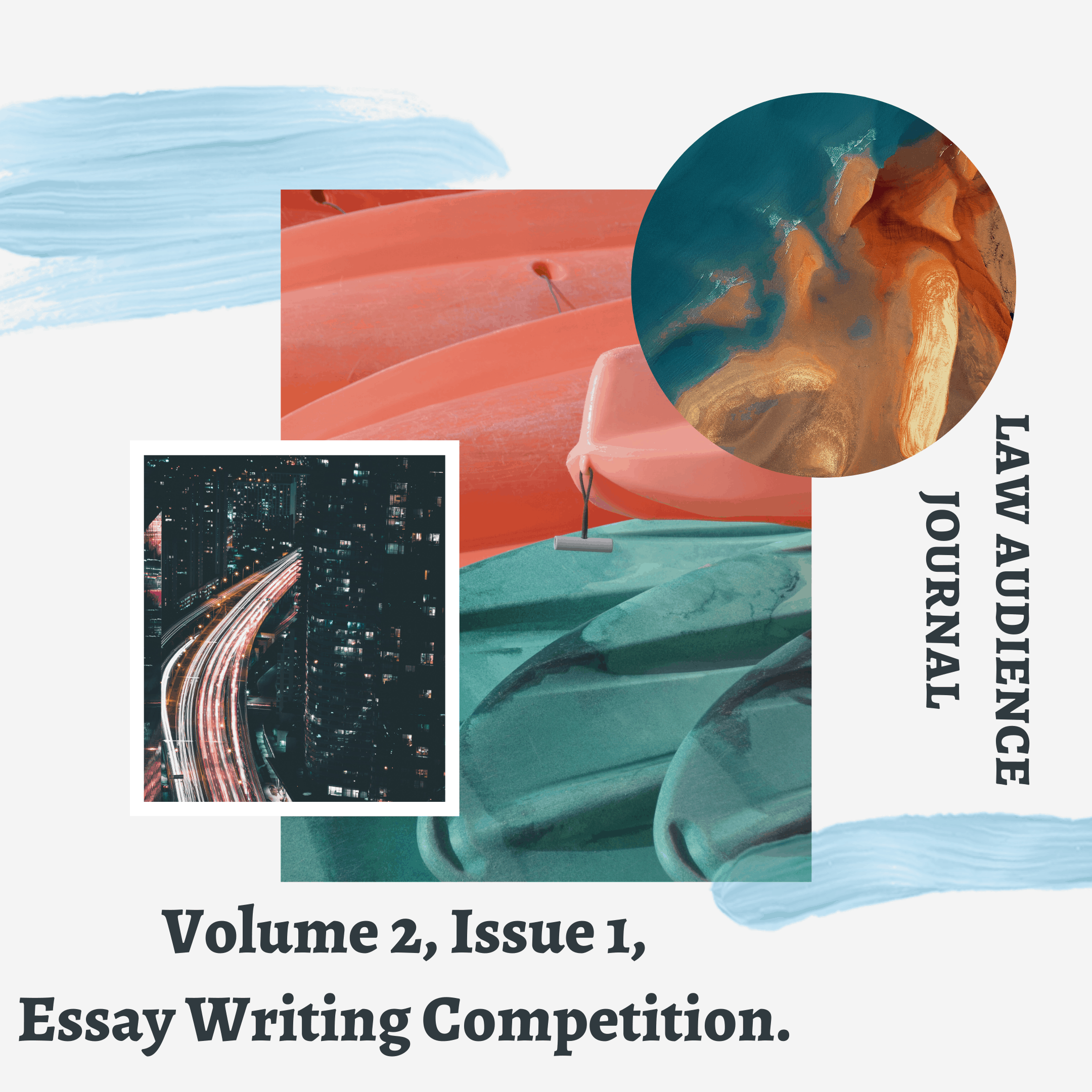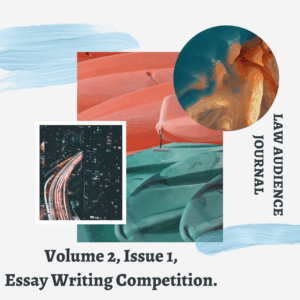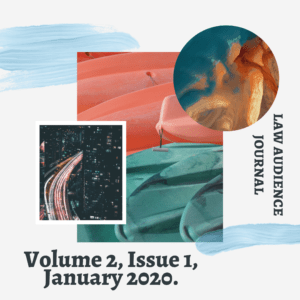Authored By: Mr. Debdeep Das (B.A.LL.B (Hons), Amity Law School, Amity University Kolkata, Co-authored by: Ms. Aparajita R. Jha (B.A.LL.B (Hons), UPES School of Law, University of Petroleum and Energy, Dehradun.
I. INTRODUCTION:
“The world has witnessed a steep rise in technological advancements in the past few decades. These advancements were facilitated by the rapid growth of the internet. The internet is gradually becoming much cheaper and more accessible by the masses due to which the exponentially increasing data is easily available to the other person sitting behind the screen. With the internet being available on phones, televisions and other electronic devices the ecosystem is such that it is almost impossible to be not surrounded by it.
Furthermore, this has also become the most common mode of communication in the modern world and as history has laid it down that the communication methods of the past were always at threat by pirates and similar is the case in the present day. With the meteoric rise of the internet as a platform, came a range of threats that threatened its safe use.
The demand and consumption of obscene materials on the internet had increased with the explosion in the number of users. Threats of privacy invasion, data theft and other cybercrimes are common but crimes involving morphing of images and videos are ones where the innocent victim may have no idea about how, why and where his or her images are being used and in what form and owing to the rapid pace of social media as well as the vastness of the internet the possibility of the victim being aware that they have been subject to such a crime is almost impossible. The threats range from inappropriate jokes to extortion and even to dark corners of child pornography. One shall also bear in mind that these crimes in the cyberspace do not only affect women and men are equally vulnerable to such acts.”
II. UNDERSTANDING MORPHING?
The word morphing has originated from the Greek word metamorphoun, which simply implies the change in the form or nature of a thing or person that completely changes the subject into something different. Later iterations of the word metamorphōsis were in Greek that built up to the current form that we know as metamorphosis, which is a Latin derivative. But when we look at it from a legal perspective, the definition is ambiguous and differs from one interpretation to the other. The most commonly used example can be image morphing which is when the image is smoothly changed from one image to the other without any correction using morphing tools from the internet.[1] In common practice, it has been seen that people create fake identities and profile to download the pictures of other people and then re-upload it after using a variety of editing methods and other software. Further, it has been seen that these uploaded images might go unnoticed by the affected individual due to its extreme changes. Commonly, the images of one individual are superimposed on the image of another that creates an image that is barely recognizable when compared to the parent images. Similar processes have been used to tweak videos having similar or effects that are worse in nature.
III. LEGISLATIONS:
The sophistication of technologies has made morphing, fake images or videos to be perceived as real and authentic. The very first attempt made to frame soft laws on cybercrime was in November 23, 2001 (effective on July 1, 2004) in the Council of Europe’s Convention on Cyber Crime in Budapest which is also known as Budapest Convention.[2] The Budapest Convention is the only binding International Legal Instrument on this issue of Cybercrime. Countries base their legislations relating to cybercrime on this very Convention. In India, the legislation framed was the Information Technology Act, 2000 which deals with cybercrimes and is based on the UNCITRAL Model Law on International Commercial Arbitration.[3] However, the Information Technology Act, 2000 was amended in 2008, without any discussion in the Lok Sabha[4]. It was hastily made after the terror attacks in Mumbai, and none of the suggestions made during the years 2005 and 2006 which were related to the Act was taken into consideration.[5]
Other than the Information Technology Act, 2000, amendments were incorporated in existing legislations including Indian Penal Code 1860, the Indian Evidence Act, 1872 and the Banker’s Books Evidence Act, 1891. There are many positive aspects of the 2008 Amendment; however, there are many concerns with regard to the Act. The Amendment introduced new provisions from 66A to 69A and other provisions related to cybercrime.[6]
The Amendments included the Central Government blocking any data which is controversial or creates a situation of law and order, the carriers i.e., any public domain who are uploading the data is not responsible for uploading the data, the person who is uploading the data will be responsible for it. Also, if any obscene photos or videos are uploaded, is made a punishable offence under this amendment. Sending offensive messages against anyone was made an offence but however, it has been struck down by Supreme Court. In India, there is an absence of a specific law or provision dealing with morphing but however, any complaint of morphing can be dealt under Section 67A[7]of Information Technology Act, Section 499[8], 500[9]and 506[10] of Indian Penal Code, 1860. The facets of this crime are not only restricted to the provisions of the Information Technology Act, 2000 but also directly attracts laws relating to defamation as laid down under Section 499 of the Indian Penal Code, 1860 with punishment under Section 500. But the real and commonly debated contention is whether morphing of images falls under the Freedom of Speech and Expression under the Constitution of India. The laws here become subjective and different due to the same and the degree of obscenity and severity comes into play. The absence of specific laws in this regard has given rise to not only people being unaware of what steps should be taken but have also given arbitrary power in the hands of the police, which leads to further harassment and exploitation of the victim.
Morphed images are often used to extort or blackmail victims and are dealt with and punishable under Section 503 alongside Section 506 respectively of the Indian Penal Code, 1860 for Criminal Intimidation. It has been seen in a recent case that the accused had uploaded the morphed images of the victim on a pornographic site and demanded money for removing the same. These also lead to a gross violation of a person’s copyright on the images that are protected under Section 2(c) of the Copyright Act, 1957.
IV. CASES:
It was seen in the Priyanka Sharma[11], case that the Supreme Court released her on the basis of Freedom of Speech and Expression but there are cases that are much graver where the court has to take stringent actions to deliver justice and restrict the unfettered use of the Freedom enshrined under Article 19 of the Constitution of India. Such was seen in the case of Pravasi Bhalai Sangathan[12], where the Court expressed that Freedom of Speech does not mean unbounded right to say or express anything, at the cost of harming others like defamation or pornography, the Court stated that “it is desirable to put a reasonable restriction on unwarranted actions but there may arise difficulty in confining the prohibition to some other manageable standard and in doing so, it may encompass all sorts of speeches, which needs to be avoided.” The Fundamental Right guaranteed under Article 19(a) is bounded by limitations under Article 19(2) of The Constitution of India, and hence pornography or the larger peril of child pornography is not protected by 19(a). Even though Freedom of Speech is a Fundamental Right but it cannot encroach on the rights of another. It was also seen that people were circulating rape videos[13] online through YouTube. Apart from depravity and a complete absence of moral value, it has been seen that revenge has been a reason for circulating such prurient content which resulted in Supreme Court of India taking note of such serious crimes and directing the Central Bureau of Investigation to initiate actions against the culprits.[14] In a recent case, it was seen that Bhartiya Janta Party registered a complaint against the Aam Aadmi Party on January 25, 2020, due to a spoof where one of the eminent members of the party, Mr. Amit Shah, was being portrayed as Gabbar from the Bollywood movie Sholay. Although this is not that grave an offence from the superficial level, but when delved deeper it shows how individuals use the Freedom of Speech and Expression in an unrestricted manner and how that might prove to be detrimental to the reputation of another.[15] Further, in a case involving a class 12 student from Delhi found her pictures on a pornographic site that was taken from her Social Media accounts and morphed. The culprit could not be tracked down nor was the complaint pursued with. The same was not the case when a 23-year-old youth had done the same and blackmailed his victims and demanded money in return of not uploading the pictures. The man was found but the quantum of his punishment could barely justify the heinous crime that he had done.
V. INTERNATIONAL PERSPECTIVE:
V.I. EUROPEAN UNION:
Article 13 of the European Union Directives on Copyright in a single mark makes the websites liable for illegal hosting of contents if they do not acquire a license from the right holders of such contents. It also made a third party liable for sharing offensive and illegal content as per the European Union Copyright Law. This means that third-party liability in offensive and illegal content sharing becomes more stringent as per the European Union Copyright Law. But in India, such laws are not yet implemented or executed.
V.II. AMERICA (PROTECT ACT, 2003):
Congress created The PROTECT Act, 2003 to protect children from the hands of technology by prohibiting all obscene images of children. Previously in the mid-1990s technology was not developed enough to make child pornography without actually committing the crime itself, but after the advancement in technology, the PROTECT Act was enacted. The Court came to a decision after hearing the case of New York v. Ferber[16], that the damage caused by these acts far outweighed the Freedom of Speech and the legislation started to gain traction. With further Amendments, it is still not perfect but is the most comprehensive legislation that exists which protects the Rights of an Individual against the image and video morphing.
VI. CONCLUSION AND SUGGESTIONS:
Not only is it required to form a new legal regime in relation to the act of morphing but it is called for at the earliest. The test of the Degree of Obscenity and Severity shall be one that should be laid down in a concrete and comprehensive manner and suitable provisions with qualifying punishments should be incorporated in the Information Technology Act, 2000. Proper procedure should be laid down for the police and the citizens should be sensitized about the same. A lesson should be taken from laws that are already prevalent in the international realm and should be used in the framing of the laws that are to come, along with the various judicial pronouncements. A regular inspection of the activities would be one of the pioneering steps towards the goal. The identity of the victim shall not only be kept confidential but instruments to take speedy action shall also be placed alongside having officers who should be trained to deal with such matter and female officers shall be the ones when it is a matter that involves a female victim.
India needs to implement laws which would track the actual culprit where the third-party should be liable for sharing offensive and illegal content. The aforementioned methods adopted by the European Union are a great example of the same. The same should be done at the earliest as Danger lies shadowed within the complexities of Cloaked Crimes.
[1]StephenMules & SimonNutley, ImageMorphing, 2006, https://stephenmullens.co.uk/static/home/image_morphing/Image_Morphing.pdf.
[2] Convention on Cybercrime, opened for signature 23 November 2001, ETS No 185 (entered into force 1 July 2004) (‘Convention’).
[3] Model Law on International Commercial Arbitration 1985 (United Nations Commission on International Trade Law [UNCITRAL]) UN Doc A/40/17, Annex I.
[4] Pavan Duggal, IT Act Amendments –Perspectivesby Mr. Pavan Duggal, CYBERLAWS.NET,http://www.cyberlaws.net/new/pd_on_ITAmendments.php (last visited Jan. 23, 2010).
[5] Karen M. Sanaro & Christyne Ferri, India’s New Information Technology Law Impacts Outsourcing Transactions, ST. B GA., June, 2009, http://www.technologybar.org/2009/06/indias-new-informationtechnology-law-impacts-outsourcing-transactions/ (last visited Jan. 23, 2010).
[6] The Information Technology (Amendment) Act, 2008.
[7] Section 67A deals with’ Punishment for publishing or transmitting of material containing sexually explicit act, etc., in electronic form’.
[8] Section 499 deals with ‘Defamation’.
[9] Section 500 deals with ’Punishment for defamation’.
[10] Section 506 deals with ’Punishment for Criminal Intimidation.
[11] SC allows bail to BJP youth wing leader arrested for sharing morphed image of Mamata, The Hindu (MAY 14, 2019 18:19 IST),https://www.thehindu.com/news/national/sc-grants-bail-to-bjp-leader-arrested-for-morphing-mamatas-photo/article27124901.ece.
[12] Pravasi Bhalai Sangathan v Union of India (2014)11S.C.C. 477.
[13] A youtube post of April 30, 2014, titled “An Innocent Indian girl was raped brutally by office colleague.” It was however blocked by Youtube.
[14] Prajwal vs Union of India, Sou Motu W.P (Crl) 3 of 2015.
[15] FIR against AAP for morphing Sholay scene, showing Amit Shah as Gabbar,INDIA TODAY, February 7, 2020 22:34 IST, https://www.indiatoday.in/elections/delhi-assembly-polls-2020/story/fir-bjp-against-aap-arvind-kejriwal-sholay-spoof-amit-shah-gabbar-1644290-2020-02-07.
[16]458 U.S. 747.


